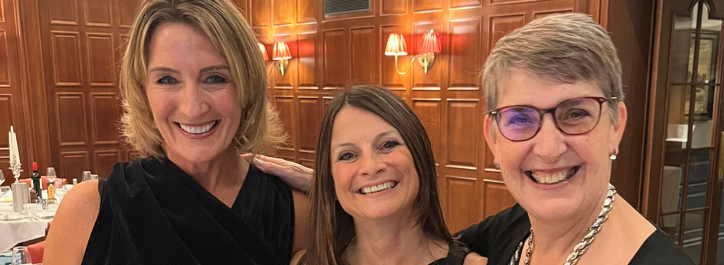Banish the bias this Pride month
It’s Pride month – four weeks dedicated to celebrating LGBTQ+ people everywhere, and to acceptance and equality. And we think it’s a great opportunity to take some time to examine your hiring process. Is it promoting diversity at your organisation, or being derailed by bias?
We all have a certain level of unconscious bias – it doesn’t make us bad people. Luckily there are lots of things we can do to make sure it doesn’t get the better of us when we’re recruiting. Here are our top tips for keeping the bias at bay.
-
Take a look at your adverts

Did you know that certain words and language in job ads can actually put people off from applying? For example, women are much less likely to apply for jobs that use ‘masculine’ words like ‘dynamic’, ‘driven’ and ‘confident’. On the flipside, men are less likely to apply if a job ad contains words considered ‘feminine’ – like ‘caring, ‘honest’ or ‘supportive’. Check your job ads for adjectives like these, and try to avoid using them at all. Stick to the essential qualifications, skills and experience that someone needs for the role.
Certain job titles are traditionally associated with particular genders too. So try to avoid using those. Some are easy to spot, like ‘chairperson’ rather than ‘chairman’. But you should also avoid terms like ‘waitress/waiter’ too (in this case you could say ‘server’ instead).
You should also take a look at any images or visuals you include in ads. Avoid using pictures or graphics that show only one or two types of people. Instead, choose visuals that are both diverse and inclusive.
If you have the time and resources, get some feedback on your job ads. Share them with people from different backgrounds and ask for their honest feedback. You might also want to carry out some A/B testing with different versions to compare response rates.
And finally, remember that this isn’t going to be a one-off job – you’ll need to continually review and refine your job ads to make sure the bias doesn’t creep back in.
-
Try blind applications
Most CVs contain some information which can lead to unconscious bias, whether that’s down to an applicant’s age, nationality or even the university they went to. Blind recruitment aims to reduce this by removing identifiable information (like names, genders, ages, ethnicity and educational backgrounds) from CVs and applications forms, so recruiters must focus solely on candidates’ qualifications and skills.
There are various bits of software on the market that can do this for you, including as part of larger applicant tracking systems, and standalone redaction tools that black out this information. You can of course ask someone to do it manually too (just make sure they aren’t part of the hiring process though!).
Some companies are even removing CVs and application forms from the recruitment process altogether. Instead, they’re using skills-based tests that mimic the challenges of the job itself to find the best candidates.
-
Create a diverse hiring team
It’s a good idea to get a few people involved in your recruitment process. Whoever you choose to review CVs and carry out interviews, make sure they have different identities and backgrounds. This will help you bring in different perspectives and make sure you don’t overlook things in interviews.
You should also make sure anyone involved in the recruitment process has had training on unconscious bias, and diversity and inclusion. They should understand the many different types of bias that can affect impact decision-making – for example:
- affinity bias: when we unconsciously favour people who are similar to ourselves or share our interests or values
- the halo effect: when our overall impression of someone is influenced by a single positive trait (for example, if an applicant went to a prestigious university, we might assume this means they’ll automatically be good at the job, even though we don’t know anything about their actual qualifications)
- confirmation bias: when we favour information that confirms what we already believe, and ignore or dismiss anything that challenges this (for example, if an applicant has previously worked for a company we admire, we might interpret their skills and experience more positively than someone who worked for a company with a bad reputation).
These are just a few examples of different types of bias. But once people understand them, they’ll find it easier to identify them in themselves and use strategies to avoid them.
-
Structure your interviews
One of the best ways to compare candidates objectively is to make sure you use the same structure and questions for each and every interview. And while it might sound a little harsh, another way to do this is by keeping the small talk to a minimum. Discussing things that aren’t related to the job or interview might seem harmless. But doing this too much will immediately make your interviews inconsistent. If you have a great chat about where someone’s just been on holiday, or something that was in the news that morning, it could change the way you perceive them. And that’s when the bias creeps back in.
Another way to help objectivity and consistency is to create an interview scorecard to evaluate applicants. It doesn’t have to be complicated – you can simply list the skills you want the right person to have, then give everyone a score from 1 to 5 for each one. You should also include space for interviewers to explain the rating they’ve given (and if someone can’t do that, then you should disregard their score).
Here’s an example of a simple scorecard:
|
Skill |
Rating (from 1 to 5) |
Comments |
|
Knowledge of our company |
4 |
Applicant was familiar with our products and services, but wasn’t clear on who our competitors are. |
|
Flexibility |
5 |
Applicant talked about a situation where they successfully adapted their approach to suit a different audience. |
-
Make diversity a goal
Analyse each step of your hiring process for bias. For example, if you’re only getting one type of person applying for your jobs, then you might have some issues with your job ads, or need to rethink where you’re advertising. If you’re getting a diverse pool of applicants but keep employing people from similar backgrounds, then there could be some bias in your interview processes.
Analysing these types of numbers from all stages of recruitment will help you root out any problems. Then you can work on ways to fix them, and start building a more diverse workforce.
Need some help?
Even with the very best of intentions, unconscious bias can be tough to weed out. So if you’re struggling to create diverse shortlists, or need a steer on how to reach a wider pool of talent, we can help. Get in touch to find out more.
And happy Pride month from all of us at Pure.



